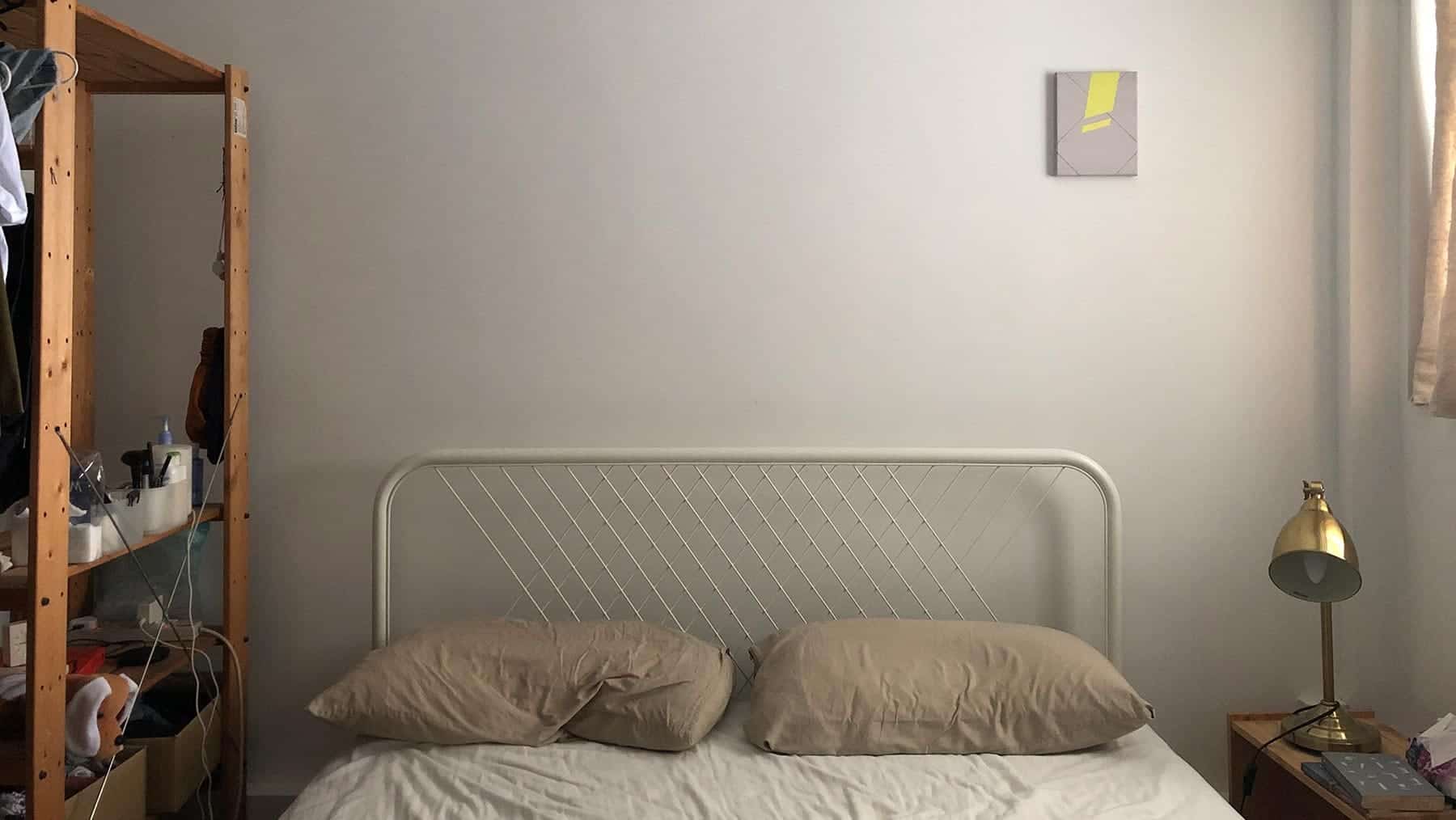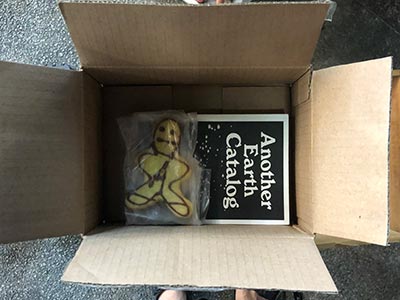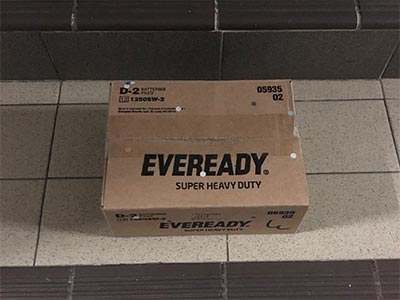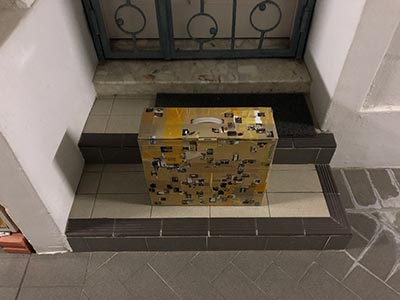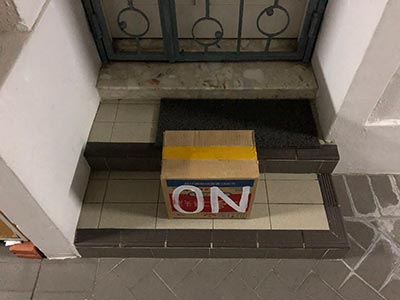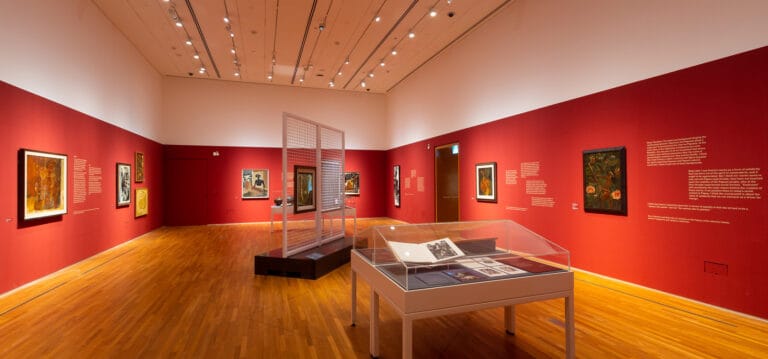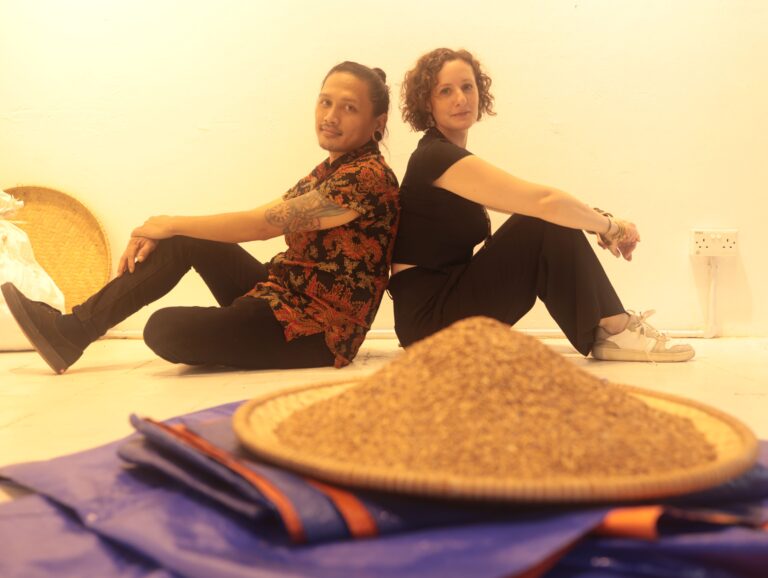What do you think of when you think ‘collector’?
If you ask me, this is what comes to mind: a middle-aged, stately looking gentleman or lady, refined in their social circles, well-connected. Certainly wealthy.
Curious, isn’t it? It may well be that a similar image pops up in your head – even though there are no rules to say that only the wealthy can collect art.
In an upcoming show titled Artist as Collector, independent art space Comma Space presents 50 artworks collected by 50 local artists to explore a different side of collecting: one which reveals the friendships and camaraderie between artists. In doing so, it upends the common assumption that collecting is a pursuit reserved for the rich, or even one where money must exchange hands. It’s an exhibition that delves beneath the surface of the artworks to discover some deeply personal stories that they have since become a part of.
One of the works on show is Jack Seah’s Untitled, an actual twenty-pound British note that the artist had anointed as art by virtue of his signature on the note itself. It was contributed to this exhibition by artist Chen Sai Hua Kuan, a good friend of Jack and incidentally a co-founder of Comma Space.
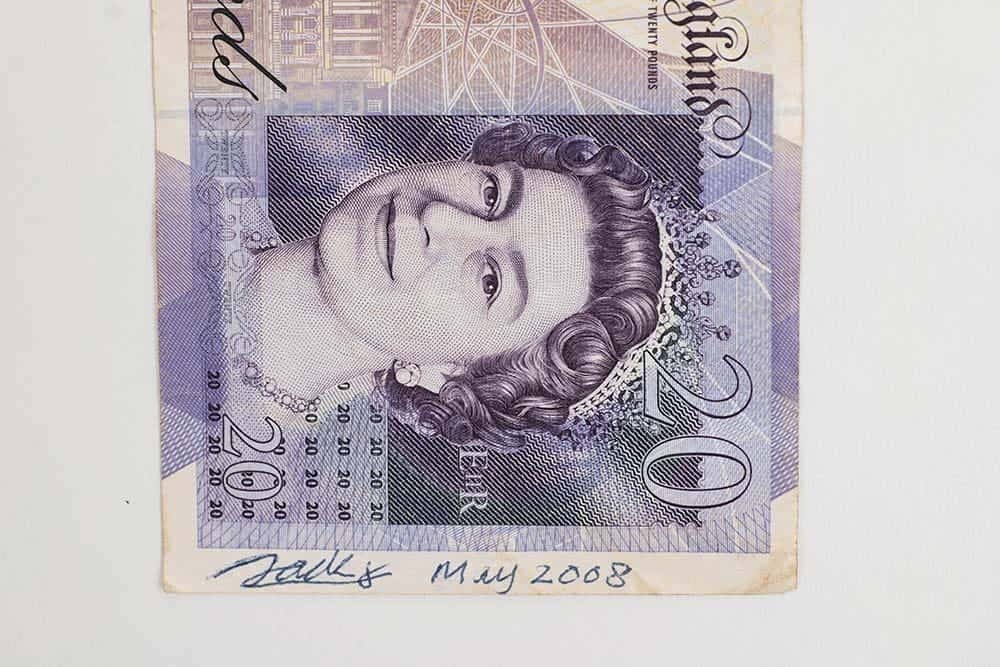
How did a piece of currency come to be transformed into a work of art? To answer this question, we must turn back the clock to an exhibition twelve years ago in London. Back then, Sai and his partner, curator Dr. Wang Ruobing were residing in Oxford. A massive earthquake had occurred in Sichuan, Ruobing’s hometown, so the duo decided to hold an art exhibition to raise funds for the relief efforts.
Wanting to contribute to this fundraising effort, Jack offered this currency note as an artwork for sale – with the suggestion to donate the money itself if no one bought it as an artwork. Jack cites the influence of American artist Joseph Kosuth’s One and Three Chairs (1965), which provoked similar questions about art’s essence and value, albeit via a different framework. A conceptual artist at heart, Jack capitalised on the interchangeability of the pound note as currency and artwork to raise questions about art’s functionality and value.
His interest piqued by the quirkiness of his friend’s gesture, Sai ended up purchasing Jack’s work, in effect exchanging one (unsigned) twenty-pound note for another. When asked if he’d ever been tempted to spend Untitled as currency, he replied, “No – although I’ve definitely been in situations where I’ve had literally just one pound left in my wallet. Back then, 20 pounds was a week’s worth of expenses to me.”
Why not?
“Because it’s a friend’s artwork, and I don’t sell my friend’s artwork.”

Sai speaks of the spirit of camaraderie that suffused the atmosphere of their community during those days, “No one was rich, but everyone was quite kind. We didn’t have much money, but as artists what we had [to contribute] was artwork.” Eventually, they raised over a thousand pounds from the sale of the artworks, and donated the proceeds to the catastrophe relief efforts.
Physically speaking, the currency form of Untitled most overtly alluded to the art’s monetary value. Yet, as an artefact of the context from which it was born, it was more a marker of the solidarity and friendship that the fundraiser-exhibition had been grounded in.
In the case of another artist pair, Ryan Lim and Lai Yu Tong, the collected artwork was likewise a testament to a friendship that shone through during difficult times.
In March 2020, young Singaporean artist Ryan returned from his studies in the Netherlands and was required to spend a fortnight self-isolating at his grandparents’ place. This was coincidentally close to Yu Tong’s residence, so the latter made it a point to do daily drop-offs of cardboard boxes and amenities for his friend (all whilst adhering to safe distancing measures, of course). The idea was to provide Ryan with a steady supply of cardboard to paint on during his quarantine days.
“I was quite worried for friends in quarantine as I personally would not do so well under such circumstances,” Yu Tong recounts. “I remember (that) going out then to make the deliveries was also quite a tense affair as there were a lot of new regulations that kept changing… to add to that, the streets of Singapore were also very eerie and unfamiliar, with very few people and little traffic, and tape barricades everywhere flapping in the wind.”
To pass the time, Ryan would paint and repaint the cardboard surfaces that Yu Tong had brought. He was not a painter by training, so painting over his works was a way to get around feeling “tired” of his paintings, as he puts it.
Eventually, Yu Tong’s birthday came. Circuit breaker still in full force, Ryan cycled to Yu Tong’s house and dropped off one of his own paintings at the latter’s front door as a birthday gift.

Yu Tong considers this piece an important work to him. He says:
“I don’t own many art pieces, [so] it’s strange to own a piece of someone’s work… to think that someone painted this for you, with their own hands and in their own time. In the sense that we all own quite a lot of other things, but most of which have been mass manufactured by machines or people we don’t know. It’s quite sad, isn’t it? Well, so anyway this thing that I own… is quite special because I actually know the person who made it. In fact, I know him quite well and he happens to be my best friend, which is kind of special.”
Collecting, then, becomes a symbol of an exchange, perhaps not in the monetary sense, but in memories shared and support rendered – hallmarks of friendships nurtured over storms weathered together.
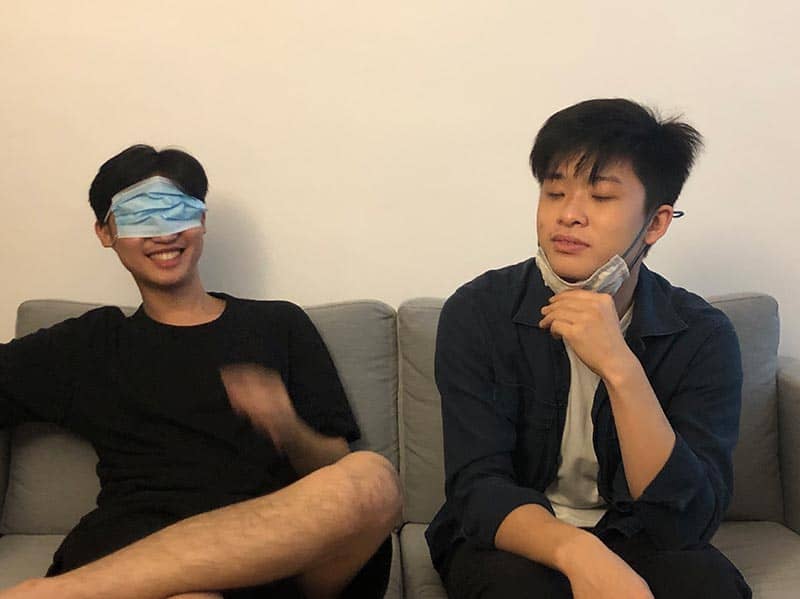
There are many stories of friendship, support and serendipity embedded in the works at Artist as Collector. Perhaps one story which most resembles that conventional relationship between artist and collector is that of architect Randy Chan’s acquisition of artist Sarah Choo’s The Art of the Rehearsal. Even then, the story of the individual and the work become entwined when one encounters the other.
The Art of the Rehearsal is an immersive three-channel multimedia video installation which depicts traditional dancers of different cultures rehearsing against the gritty back lanes of shophouses. To Randy’s mind, Sarah had perfectly captured the spirit of the shophouse back lane in all its everyday, unvarnished charm. This aspect of the work was what stood out to him, in no small part due to the events that were unfolding in his professional life at the time.
Randy recalls fondly, “I bought the work because it spoke to me at that moment in time when I saw it. I had just finished designing a shophouse unit that was part of the Lor 24A Series Shophouse for which we won an architectural heritage award. I guess it’s a bit of serendipity as well… when a work comes along and it’s almost as if it picked you rather than the other way around.”

“The works that I collect mark a certain moment in my life, such that when I see the artwork, I can recall where I was at that point in my life,” says Randy. It’s a statement that seems to ring true for many of the artist-collectors whose works make up this exhibition. So when you visit – and I hope you do – take the time to look at the art not merely for their aesthetics, but also as artefacts that unfurl some of the histories of this artist community that we know and love.
_________________________________________________
Artist as Collector is presented by Comma Space 逗号空间 and curated by Dr. Wang Ruobing. It will be on view at Gillman Barracks, 1 Lock Road, Unit #01-01, from 22 to 30 January 2021. For more information, click here.
Accompanying the exhibition is a public talk that will be livestreamed on Facebook on 23 Jan 2021 from 4 – 5pm. This conversation titled “On Collecting” will be moderated by Dr. Seng Yu Jin (Senior Curator, National Gallery Singapore) and feature Boo Sze Yang, Cheryl Loh, Ezzam Rahman and Wang Ruobing.
There will also be a curator’s tour of the exhibition on 24 Jan 2021 at 4pm and a researcher’s tour on 30 Jan 2021 at 4pm, though they are both already fully subscribed.
This article is produced in paid partnership with Comma Art Space. Thank you for supporting the institutions that support Plural.
